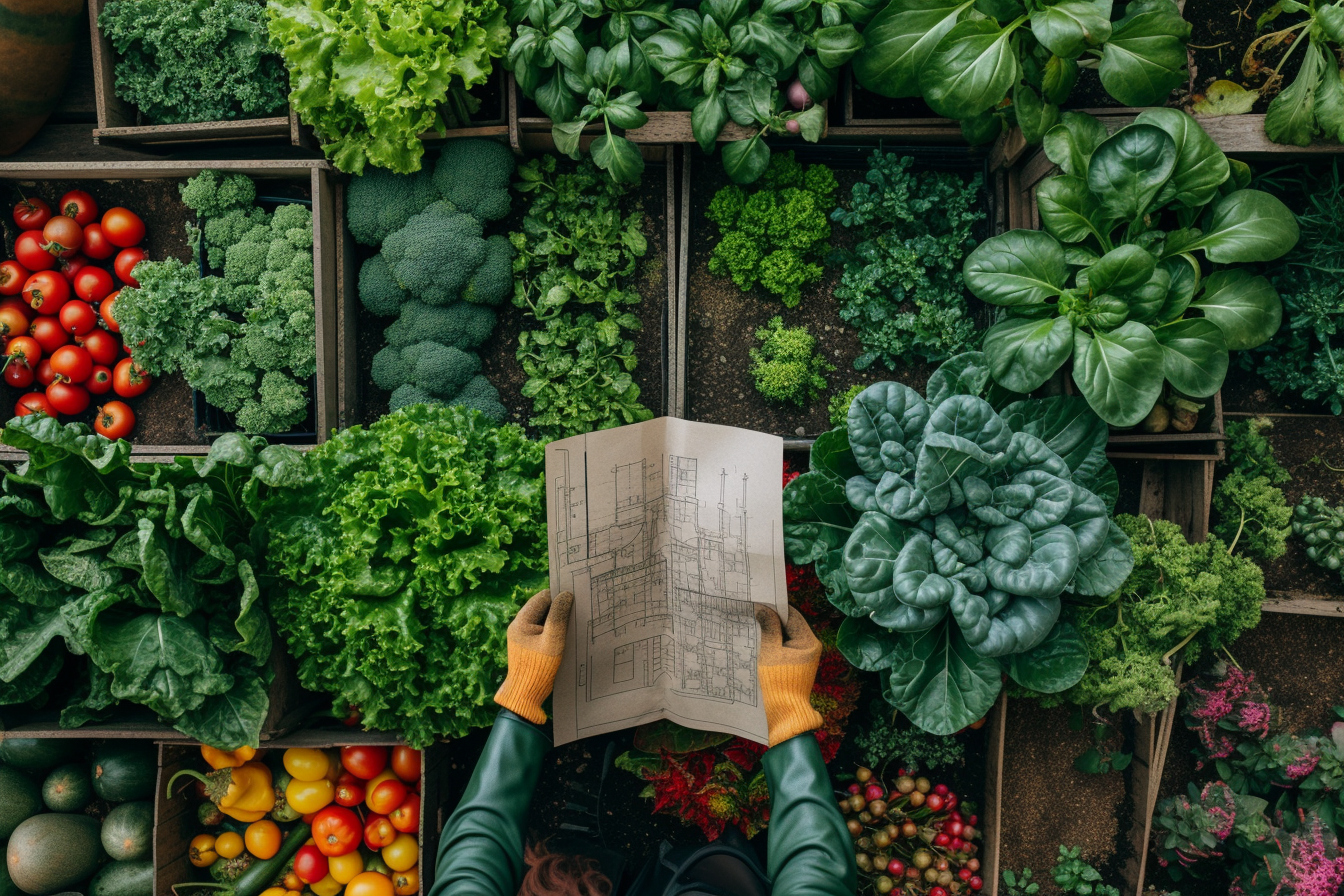Growing your own vegetables can be a rewarding endeavor, both for your health and your sense of accomplishment. A well-planned vegetable garden can yield fresh produce for your table while also beautifying your property. Whether you are an experienced gardener or a novice, these tips will help you design a productive and enjoyable vegetable garden.
Starting with the basics
Before you even put a spade into the soil, it’s essential to understand the fundamentals of garden location and soil preparation.
Optimal Location
Choose a spot with ample sunlight, as most vegetables need at least 6 hours of direct sunlight per day. Pay attention to the orientation; south-facing gardens often receive more light. Additionally, ensure the site has good drainage and is not prone to collecting standing water.
Soil Preparation
Rich, fertile soil is the backbone of a thriving vegetable garden. It’s wise to get your soil tested to determine its pH and nutrient levels. Amend the soil with organic matter like compost to improve its structure, fertility, and water-holding capacity. Proper soil preparation lays the groundwork for vigorous plant growth.
Designing your garden layout
Strategic design is not only functional but can also enhance the aesthetic appeal of your garden.
Garden Beds
Raised beds or in-ground plots are standard choices. Raised beds offer better drainage and can make maintenance easier, while in-ground plots generally require less initial setup. Regardless of type, ensure beds are narrow enough that you can reach the center without stepping on the soil, to avoid compaction.
Paths and Accessibility
Incorporate pathways that are wide enough for comfortable access. Mulched or paved, pathways should facilitate movement and not become obstacles during your garden chores.
Plant Spacing
Allow ample space between plants to reduce competition for nutrients and sunlight. Consider the mature size of the plants to avoid overcrowding, which can lead to pest and disease issues.
Companion Planting
Intelligent companion planting can enhance your garden’s productivity and health. Some plants are mutually beneficial; they can deter pests, improve soil, or enhance the flavor of neighboring plants. Research and planning will maximize these symbiotic relationships.
Choosing the right vegetables
With countless options available, choosing what to grow can be daunting. Here are some points to consider:
Climate and Seasonality
Select vegetables suited to your climate and the current season. Some vegetables can handle cooler temperatures, and others thrive in the heat. Your local extension office can provide a list of recommended varieties for your area.
Personal Preferences and Usage
Grow what you and your family enjoy eating. Consider how you plan to use the produce, whether fresh, preserved, or perhaps for sharing.
Succession and Crop Rotation
Succession planting allows for multiple harvests throughout the season. After one crop is harvested, another takes its place. Crop rotation, meanwhile, involves changing where specific vegetable types are planted each year to prevent soil depletion and reduce pest and disease problems.
Watering and irrigation
Adequate and consistent watering is vital for vegetable garden success.
Irrigation System
An irrigation system, whether a simple soaker hose or a drip irrigation setup, can deliver water efficiently to where it’s needed most – the roots of your plants. Automated systems can save time and prevent the garden from drying out if you forget to water.
Water Conservation
Conserve water by using mulches to retain soil moisture and reduce evaporation. In addition, watering in the early morning minimizes water loss and helps prevent fungal diseases.
Pest and disease management
A healthy vegetable garden requires vigilance and proactive measures against pests and diseases.
Preventative Measures
Healthy plants are less susceptible to problems, so focus on keeping your garden well-tended. Crop rotation, resistant varieties, and cleanup of garden debris can go a long way in preventing issues.
Natural Remedies
When pests or diseases strike, opt for natural remedies where possible. Insecticidal soaps, neem oil, and biological controls like ladybugs for aphid management are examples of eco-friendly choices.
Physical Barriers
Fences, row covers, and netting can protect your garden from various intruders, including insects, birds, and mammals looking for a free meal.
Sustainable practices
Sustainability ensures that your garden continues to produce year after year without depleting resources.
Composting
Creating your compost from garden waste and kitchen scraps enriches the soil and reduces landfill waste.
Organic Methods
Embrace organic methods of pest control and fertilization to reduce harmful chemicals in your garden ecosystem.
Biodiversity
Encourage biodiversity by including a variety of plants and even adding a section for pollinators. This can lead to a more resilient garden system.
Utilizing technology
Garden planning has entered the digital age, bringing tools that can assist in designing and managing your vegetable garden.
Garden Planning Software
Several software solutions and apps can help you create a detailed garden plan, complete with plant spacing and succession timings, which can be invaluable for a beginner.
Online Resources
The internet is a treasure trove of information, with countless forums, videos, and articles dedicated to gardening tips and tricks.
In crafting a successful vegetable garden, the harmony between aesthetic appeal and functionality is paramount. Each consideration, from initial site selection to ongoing maintenance, lays a foundation for a bountiful harvest. By being judicious in layout design, plant choices, and care methodologies, you create a space not only to cultivate vegetables but to cultivate joy and relaxation. The garden becomes a living, growing reflection of your attention to detail and dedication to nurturing life. Keep learning, keep experimenting, and let your garden be a constant source of growth, in all senses of the word.

Leave a Reply